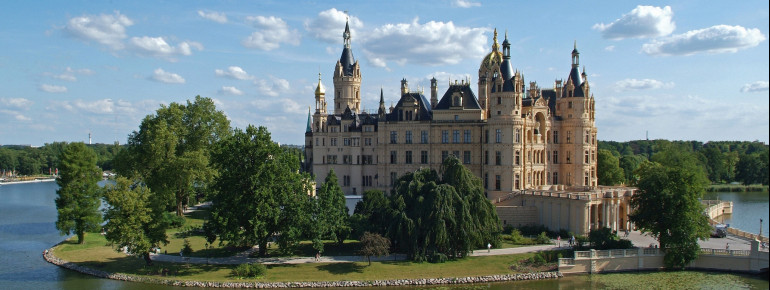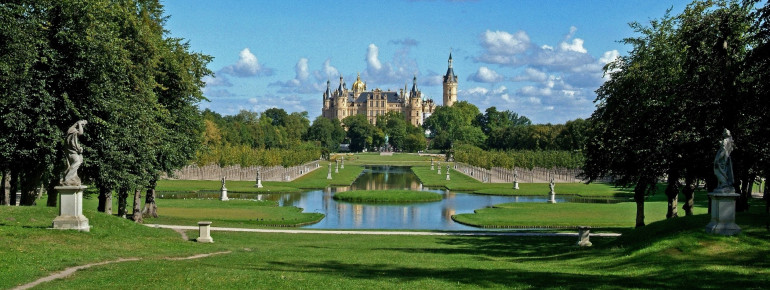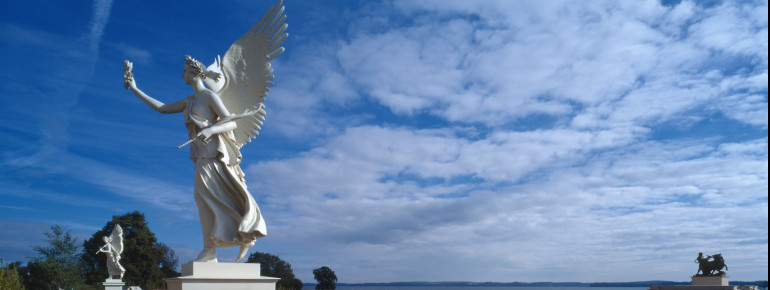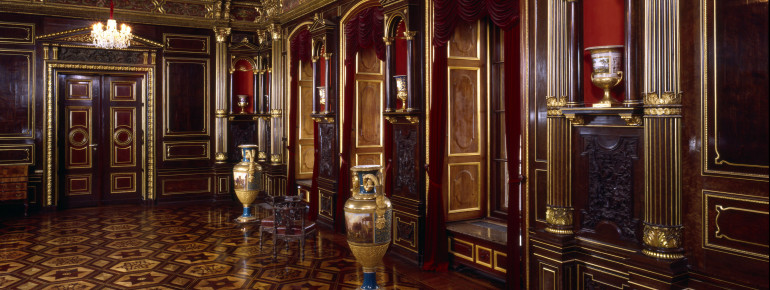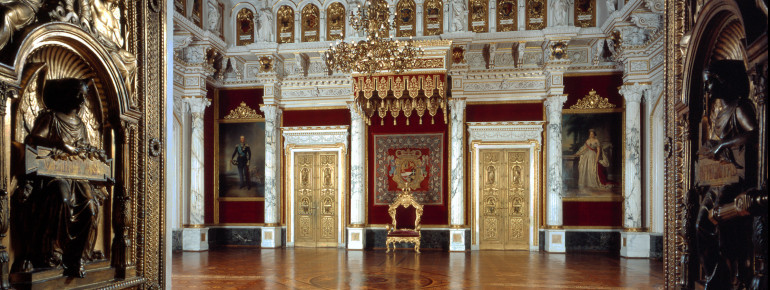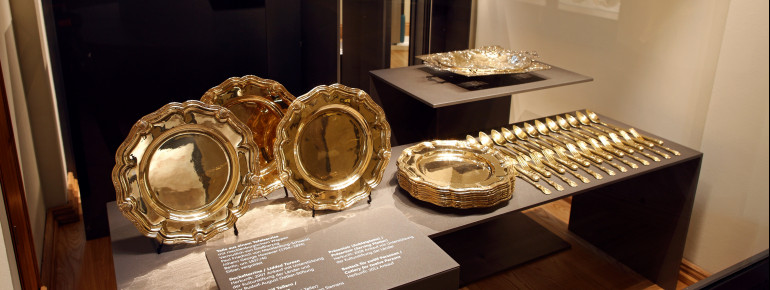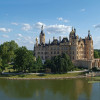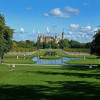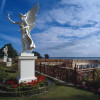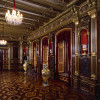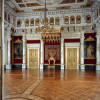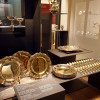Contents
Description
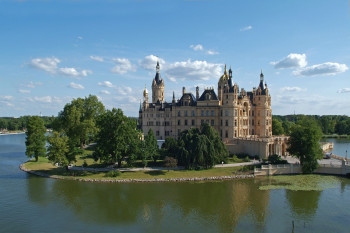
Schwerin Palace is located in a charming lake and park landscape on a small island in Schwerin. Aside from the inner wings of the castle's lake wing, which were destroyed in a fire in 1913, the castle is largely preserved in its original condition. Nowadays it features a museum, where you can admire paintings, sculptures, and other artfully crafted objects in the grand duke's suites. In addition, the rooms of the Grand Duke and Grand Duchess still retain decorations of impressive size and quality.
The Baroque Palace Garden
Around the main building, you can walk through the extraordinary parks and enjoy the view over the Lake of Schwerin. The historic cast-iron swing bridge leads you to the palace garden, which is a Baroque complex designed by the Frenchman Jean Laurent Legeay. The many viewing terraces and the Mediterranean charm of the landscape architecture create flowing transitions from the castle to the lake shore. Originally designed as a pleasure garden, the complex was expanded in the 19th century by Peter Joseph Lenné into an English landscape park.
Historical Information
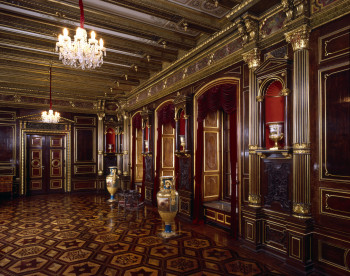
The history of Schwerin Palace dates back to the Slavic middle ages of the 10th century. At that time, a fortified castle was built on the offshore island in Lake Schwerin by the Obotrites, the ancestors of the Mecklenburg princes. Some remnants of this period are still partially preserved. It was not until the late 14th century, when the Obotrites were integrated into the German Empire, that the fortifications were further developed into a gradually stone-like residence of the state government. However, above all, the Schwerin manor house grew to a respectable residence castle over a polygonal ground plan in the 16th century under Johann Albrecht I. In the middle of the 19th century, the splendid Schwerin Palace was finally built, which is largely preserved until today.
In 1919, following the abdication of Grand Duke Friedrich Franz IV of Mecklenburg-Schwerin, the castle became the property of the state. The rooms were finally opened to the public as a museum in 1921. After World War II, the palace was used as an educational school until the 1980s. Today, the castle is the seat of the Mecklenburg-Western Pomerania state parliament and houses the Museum of Schwerin Palace, which also manages the castles Güstrow and Ludwigslust. Since 2014, the Schwerin complex has been listed as a cultural landscape of historicism on the list of applications for the UNESCO World Heritage Site.
Interesting facts
- The day pass at Schwerin Palace is €13 making it one of the 10 cheapest tourist Attractions in Mecklenburg-Western Pomerania.
How to get there
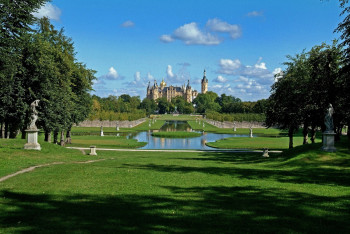
Coming from the direction of Hamburg, you reach Schwerin Palace via the A24. Leave at the exit 11-Hagenow and take the B321, turning left onto the Ludwigsluster Chaussee. Then drive along the Graf-Schack-Allee to Schwerin Palace and park your car in one of the surrounding parking lots.

